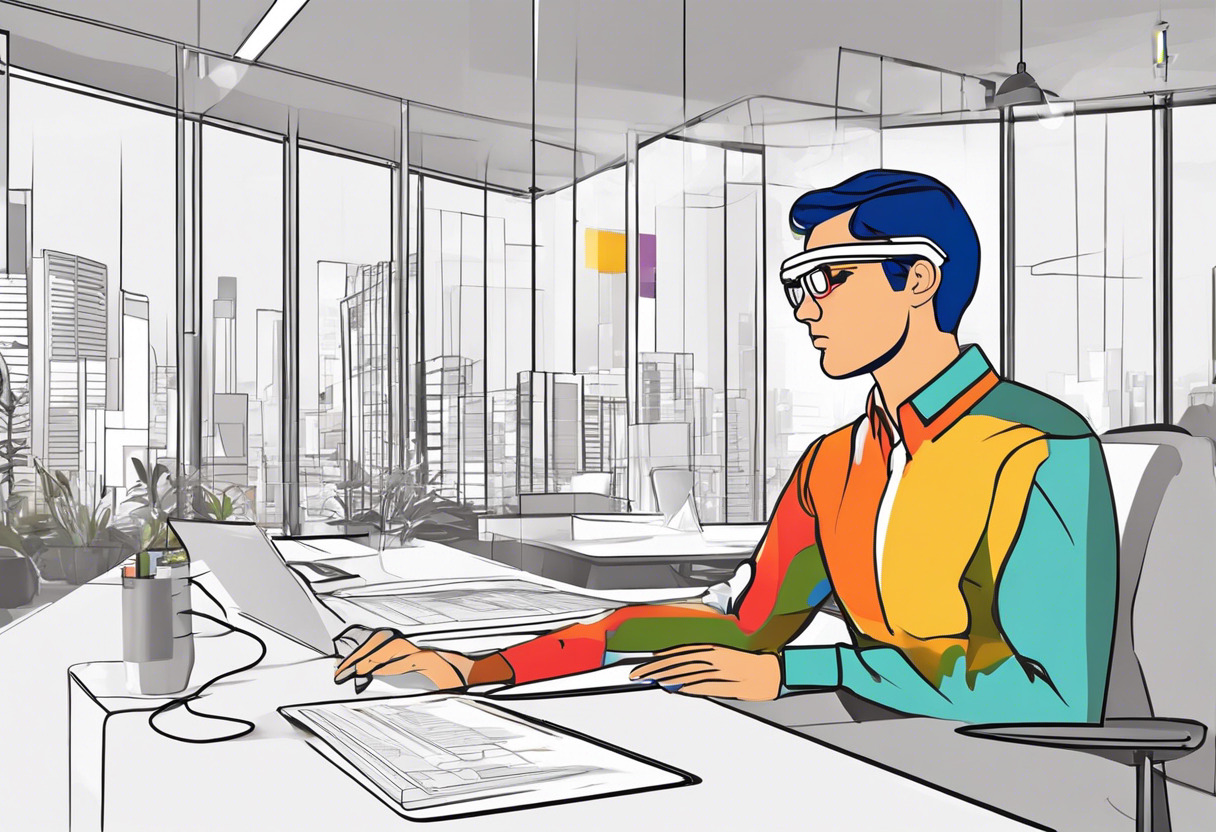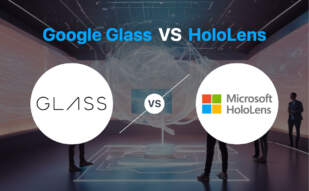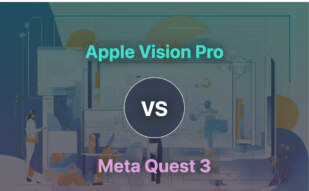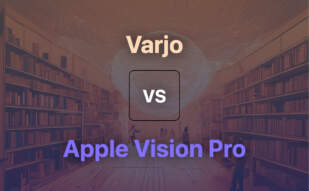Key Differences Between Google Glass and Vision Pro
- Google Glass is an Android-based wearable, featuring voice-, motion-controls and an augmented reality (AR) experience. Vision Pro offers a comprehensive spatial computing solution with hand, voice, and eye controls.
- Google Glass focuses on professional applications in environments like warehouses and hospitals, providing time and money savings. Vision Pro leans towards personal use with features such as a personal theater experience and 3D spatial photography.
- Price and availability vary. Google Glass Enterprise Edition 2 is already on the market. Vision Pro, costing $3,499, will only be available from 2024.
- Vision Pro’s 4K better than resolution and iPodOS capabilities provide an edge for advanced users needing more than AR. Google Glass, though more simplistic, offers solid, proven undertaking for professional use.
For a comprehensive, future-driven spatial computing experience, Vision Pro is unrivaled. Conversely, Google Glass with its solid, proven AR capabilities is well-suited for professional scenarios. Determine your needs accurately before choosing.

| Comparison | Google Glass | VisionOS |
|---|---|---|
| Initial Release | 2013 | 2024 |
| Control Mechanism | Voice, Motion | Voice, Eyes, Hands |
| AR/VR Capability | Augmented Reality | Augmented Reality, Virtual Reality |
| Operating System | Android | VisionOS |
| App Integration | Google Hangouts, Google Maps, Google Now, Third-party Apps | iPadOS interface, Supports Web Apps |
| Camera | Yes | 12 cameras, 3D |
| Audio | Yes | Spatial Audio, 6 microphones |
| Display | Semi-transparent LCOS system | 23 million pixel micro-OLED, better than 4K |
| Security | No | Optic ID iris recognition |
| External Battery | No | Yes |
| Body Type | AR Glasses | Aluminium, Resembles ski goggles |
What Is Google Glass and Who’s It For?
Creating an immediate bridge between augmented reality and conventional technology, Google Glass represents the alternative way to interact with digital ambience. This wearable Android device, launched initially in 2013, uses voice and motion-controlled commands to provide information within the user’s field of vision, extending a new perspective for tech enthusiasts.
Primarily aimed at professionals, particularly in factories, warehouses and hospitals, the Glass Enterprise Edition 2 is noted for bolstering safety and driving efficiency. Opening the doors for seamless integration with Google’s suite of apps and providing real-time updates via Google Now, it’s a tool for the tech-savvy looking to immerse themselves within an interconnected digital ecosystem.

Pros of Google Glass
- Delivers real-time updates with Google Now
- Integration with Google’s robust suite of apps
- Ideal for professional use in industries requiring hands-free information access
- Allows photo/video capture, provides Google search engine access
- Supports voice and video calls, email response through voice dictaction
Cons of Google Glass
- Privacy concerns raised with its initial launch
- Limited to Android-based OS
- Relatively expensive for personal use
- Needs integration with more third-party apps
- Future prescription eyewear frame compatibility only speculated
What Is Apple’s first spatial operating system, visionOS and Who’s It For?
Unleashing a novel digital perspective into physical space, visionOS is Apple’s first spatial operating system. Designed to be controlled via voice, eyes, and hands, it brings an edge to collaborative and connectivity platforms. Leveraging immersive spatial audio and atomizing workspace, visionOS presents an enriching AR/VR experiences.
Intended for tech pioneers who prefer an integrated Apple ecosystem, visionOS promises user interaction on a whole new level. With its advanced features such as personalized sound emitted via audio pods, Eye Tracking and unique Optic ID security system, it’s intended for those who value immersive experiences mixed with lenient security.

Pros of VisionOS
- Intuitive user interaction with hands, voice, eyes
- Advanced features like Precise Eye Tracking, Optic ID security
- Transforms any space into personal theater
- Facilitates collaborative work with virtual avatars
- Supports extensive app store akin to iPad or computer
Cons of VisionOS
- Steep price point of $3,499
- External battery required creating a dangling cable distraction
- Competes with already established Meta Quest 2, Pico 4
- Available only from 2024
- Requires Apple ecosystem for full utilization
Google Glass or Vision Pro: Which Reigns Supreme?
To the modern developer, game maker, AR/VR creator, or tech enthusiast deciding between Google Glass and Vision Pro is akin to finding oneself between a rock and a hard place. Both technologies have their strengths, but they also don’t skimp on the quirks. Here’s your roadmap to this tech dilemma.
Developers and Game Makers
If you’re engrossed in developing apps, games, or exploring AR/VR possibilities, Google Glass might be the better choice. Why? The Android-based operating system, backward compatibility, and the ability to integrate third-party apps like New York Times, Evernote, Path, and Skitch makes it a developer’s paradise. But if you’re leaning towards a future-proof device with the latest tech advancements, Vision Pro’s visionOS and A-series chips make a compelling case.

Industrial and Healthcare Professionals
Google Glass appears to be a reigning champ for industrial and healthcare uses. Its ability to relay real-time updates, save money, integrate Google’s step-by-step directions, and increase safety particularly in factories, hospitals, and warehouses, makes it a tech powerhouse that’s hard to rival. Vision Pro is still a contender though, should you want immersive experiences with superior audio and display capabilities.

Tech Enthusiasts
Tech enthusiasts seeking top-end features will find Vision Pro’s array of digital fitting functionalities appealing. Sporting precise eye tracking, a dual-chip processor, spatial computing power, Light-Seal, and immersive 4K display, it’s truly a device for the future. Just remember, all these exciting specs come with a lofty $3,499 price tag.

The choice between Google Glass and Vision Pro truly hinges on your unique needs. While Google Glass triumphs in its practical applications for developers and industrial environments, Vision Pro is a tech enthusiast’s dream bursting with cutting-edge features. However, this advanced technology indeed does come at a cost.
Logan Bellbrook
Content writer @ Aircada with a knack for nature & AR/VR/XR. Blogging the intersection of tech & terrain.





